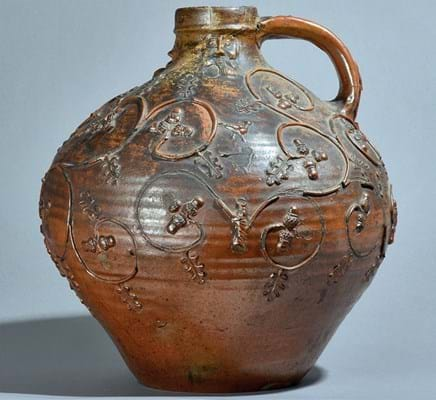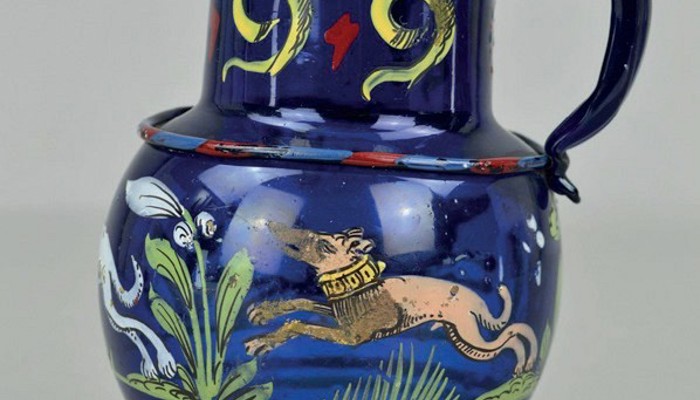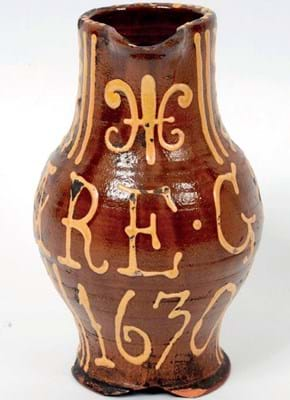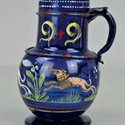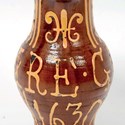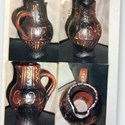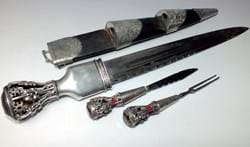All were met by eager competition against what proved to be modest expectations.
Consigned to Bellmans’ (22% buyer’s premium) sale in Billingshurst on December 4 by the executors of a local deceased estate was a large German saltglaze stoneware jug or bartmannkrug.
These bulbous vessels – this one sprigged with vignette of birds among branches of oak leaves and acorns beneath three bearded masks – are typically associated with Cologne. It dated from the second quarter of the 16th century.
There were repairs to the handle and losses to the applied decoration, but it was particularly appealing for its very large size: almost 16in (39cm) high.
The jug attracted plenty of attention from Continental European bidders at its £300-500 guide and sold to the UK trade at £8400.
On the chase
Estimated at £30-50, a 6in (15cm) high blue glass tankard sold for £6500 at Richard Winterton (17.5% buyer’s premium) in Lichfield on December 12.
The enamelled decoration of two greyhounds chasing a fox includes the prominent date 1599.
It was in generally good condition, save some overpainting to lost enamels and an area to the rim that may have been ground down, prompting the auctioneers to believe it was a historicist piece from the 19th century. In fact, bidders were confident it was period and probably made in southern Germany.
Similar to the form assumed by many Rhinish saltglaze jugs of the period, enamelled decoration such as this appears to many Germany glass vessels from the 16th and 17th centuries.
Fear of God
A dated 17th century slipware jug, with fleur-de-lys style motif and linear decoration, emerged at Sherborne, Dorset saleroom Charterhouse (21% buyer’s premium) on December 14.
Standing 7in (18cm) high, it bore the motto Feare God 1630. It was found by the vendor while excavating on a Welsh farm, its grubby condition shown clearly in a series of four photographs taken shortly after its discovery.
In fact, save some large chips to the foot, it had survived its centuries underground relatively unscathed – enough to attract a bid of £3000.


